School Has the MOVES for Cyberspace Cooperation
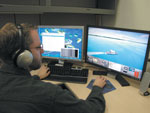 |
Eric Heine, research associate with the Delta3D team, takes part in the team’s game, MaritimeOps, while four other colleagues simultaneously engage in the game as well. Heine is playing the role of police boat patrol. |
Virtual collaboration is both the now and the future for communications among people in many walks of life. For the military community, the continued immersion in network centricity allows and demands more methods of online information sharing. The process saves time, resources and most importantly, lives. The civilian sector is experiencing increasing chances to collaborate in the virtual realm as well, and the two factions’ technologies and practices increasingly are overlapping. The
Cmdr. Joseph Sullivan, USN, is the director of the Modeling, Virtual Environments and Simulation (MOVES) Institute at the Naval Postgraduate School (NPS) in
His organization wants warfighters to become experts in the field so they can then become managers and provide policy guidelines and decisions. The MOVES Institute offers a master’s degree focused on modeling and simulation in addition to other degrees, but the institute also conducts research, which gives it the flexibility to explore areas of potential. The academic arena evolves more slowly than the research arm, but by having both programs, institute personnel can explore potential areas and fold knowledge back into the degree program.
A major theme of work at the NPS is focus on the end user, which for MOVES means ensuring virtual environment and simulation products arrive to the warfighter to provide practical, sustainable and cost-effective benefits. This involves exploring emerging virtual environment technology and its potential application to the military. MOVES also concentrates on how to achieve open architectures that are secure and robust, how to make the best use of open-source systems and how to establish standards that enable interoperability, speed development and provide proper incentives to industry.
The commander explains that the institute’s dual responsibility as both educator and developer provides a unique and powerful capability. On one hand, it is a producer, aiming to make people smarter and faster with emerging technologies. On the other hand, a huge demand exists for expertise in modeling and simulation, but how the institute should function in that area is up for debate. One idea is that it should serve as the education and research arm behind distributed learning in virtual environments. Another thought is that it should act as the content provider to put more modeling and simulation experts into the field.
The need for more expertise continues to grow as the number of platforms increase, and the people operating them must learn technology quickly. Cmdr. Sullivan says developers need to make systems robust and high performing with relatively straightforward learning curves. Because the human element is the most expensive part of all the technology usage equations, how to drive that cost down is a critical question, and virtual collaboration can be a key to that solution. Unfortunately, one of the problems in the virtual collaboration field is also a human factor. Ironically, a tough issue, according to the commander, is the difficulty associated with collaboration across industry, academia and military.
One area where the institute fills a key role is that of influencing the future of virtual collaboration. “We train the people and send them out there,” Cmdr. Sullivan states. “That’s exactly why I love NPS.” The gap from technical to tactical is bridged in the classroom by bringing together users and developers. Students ask questions and put forth ideas that translate into faculty corporate knowledge. Scientists might create something that works well on the drawing board, but they might lack the fundamental understanding of field operations. Whereas operators know what they need, but they might not know what to ask for in terms of what emerging technologies can do for them. The NPS connects the two factions.
When talking about virtual collaboration, Cmdr. Sullivan defines the term as people working together over an Internet connection—using anything from Twitter to teleimmersion technology—instead of face-to-face. In places such as
Currently, parties in theater use whiteboards over a computer to share information. Cmdr. Sullivan would like to see the environments support better connections, such as ones between units preparing to deploy and those already overseas. He believes various technologies could support that from mobile devices to large-scale simulations. Another use for that robust virtual collaboration would be to train sailors on ships about upgrades and modifications to weapons systems.
The MOVES Institute has several programs underway to advance virtual collaboration. “It’s important, because it’s the future,” the commander says. He continues that the potential in the field is even greater than the current projects. These include Delta3D, an open-source game engine that makes it easy and cost-effective to create virtual environments. MOVES created the open-source game before open source became a popular model. Another effort is X3D, which leverages Web standards to create accessible three-dimensional environments.
Also underway is a project to help with interagency cooperation and small team training and collaboration. It trains joint military and civilian disaster response through a first-person type game. While the commander knows using this type of simulation to train first responders is not new, the focus on how to do it in a joint environment is. The developers have to figure out how to link live data into the virtual simulation.
Another effort at the institute aims to improve the military planning process. The project is creating a planning tool that uses a game interface, a massively multiplayer online game (MMOG) and social networking infrastructure to improve military exercise planning. It is hooked to a constructive simulation for analysis and experience. Users employ the tools to come up with an improved planning scheme that allows them to make trade-off decisions on resources to obtain maximum benefits. “Why should planning exercises be different than setting up SimCity?” Cmdr. Sullivan asks.
 |
This simulated boat is part of the Delta3D MaritimeOps game. The game allows multiple personnel to participate concurrently. |
In addition to his focus on the current virtual collaboration projects, Cmdr. Sullivan also has his eye on where he would like to see the institute go in the future. One of his big wishes is to improve education and distance learning not only for those seeking a degree, but also for that sailor on a ship who needs technical training.
In terms of trends in virtual collaboration, the commander says that from his view in the “cheap seats,” mobility and ubiquity will have a lot to do with the future. He also expects more immersive technologies that enable the quicker distribution of expertise to make their way onto the scene. The Defense Department will be looking for different means to make training shorter. “What I’m trying to say is that I think the future is pretty wide open,” he states. He also believes the community needs standards and an open field where developers can push technology and let users decide the optimal novel applications.
Involvement from industry will continue to play a role in the future as companies spend funds to advance virtual collaboration. “The one thing I think is surprising is the corporate investment,” Cmdr. Sullivan says of activities in the field over the past few years. The commander believes that industry is leading the way in virtual collaboration. “I think we are too much following,” he shares. “I think our best and brightest ideas are with our more junior troops, digital natives as they call them.”
One of the benefits of virtual collaboration is that more discovery can be done at the bottom level, and then the information can be pushed up the chain. Through virtual work, collaboration capabilities are available to the operators who are doing the hands-on jobs. However, Cmdr. Sullivan says the opportunity to flatten existing hierarchies still has the possibility for error. When done correctly, communication is increased. But when handled inefficiently, the same problems that exist in traditional chains of command crop up.
The commander believes the military should examine the issue of how to flatten hierarchy advantageously and also maintain a good chain of command. “How to achieve that will be a significant challenge,” he says. Another area where the military can use virtual collaboration and receive benefit is in supporting education and training because personnel costs are a huge chunk of life cycle costs.
Training also can benefit from virtual collaboration because, according to Cmdr. Sullivan, a virtual environment can become the ultimate instrumented range. Using current practices, the best that trainers and reviewers can do is record activities for after-action review. By employing virtual collaboration, the military can archive what decisions were made and why, then learn from them. “That’s another great area of research,” the commander says. From a business perspective, companies could see who was in a meeting, what was discussed and what attendees might have missed when a decision was made. “We think this is a wide-open research opportunity,” Cmdr. Sullivan states.
However, the commander does not believe that most efforts will be directed toward training rather than operations. The operational realm has many areas in which virtual collaboration could develop. The commander says work will be focused on how to achieve autonomy at the unit and individual levels. People also will have to determine how much information is too much, because transparency is good, but too many people overseeing an action could interfere with combat troops. “Anything to make [warfighters] smarter on the ground is great until everyone is trying to run the same show,” Cmdr. Sullivan says. “That’s the challenge in my mind for distributed operations. Does that relate to virtual collaboration? I don’t know.”
Part of the problem with figuring out what relates to virtual collaboration is that the term is still being refined in the technical community. The U.S. Air Force, for example, has created a projected called MyBase in Second Life where the public can come to learn more about that military branch. In other sectors, military test and evaluation personnel are interested in influence operations, also referred to as psychological operations. “That’s a totally different view of virtual communications,” the commander explains.
Using influence operations, personnel examine how to use information operations in virtual environments and how those operations affect the targets. Questions surround how to measure the impact of those actions in the online environment as well as how that works in concert with the rest of a warfare effort. Cmdr. Sullivan says a lot of social psychology goes into that type of work as researchers attempt to determine how to make virtual people more influential and attractive. The task is part computer science, but it is more about human factors.
Sharing various types of information through different virtual collaboration methods presents a challenge to users and developers in terms of security. Keeping information secure while distributing it is critical for operational success, but difficult to achieve. The problem compounds when communications are between agencies and coalition partners, especially when everyone might not want to talk to everyone else at the same security level. Work in cybersecurity in the military is ongoing, including efforts at the NPS.
Web Resources
The MOVES Institute: www.movesinstitute.org
Delta3D: www.delta3d.org
SimCity: http://simcitysocieties.ea.com
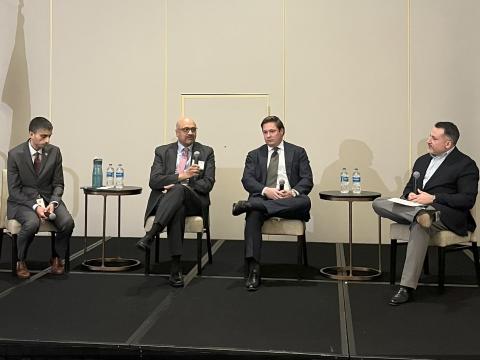
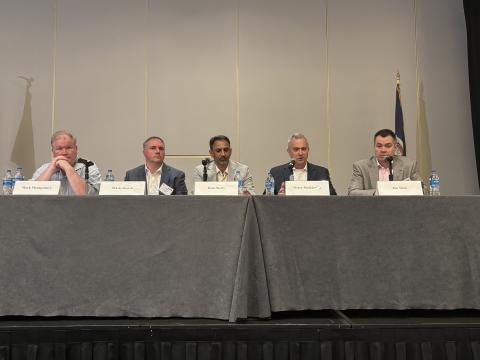
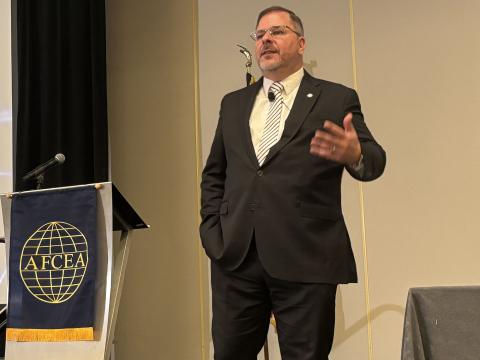
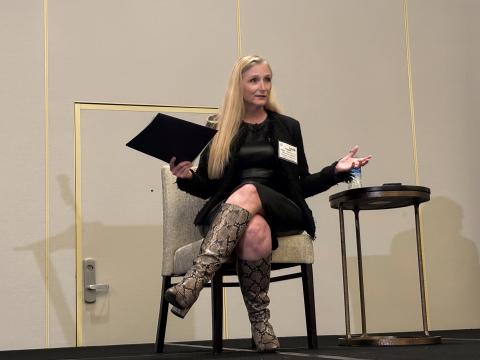
Comments